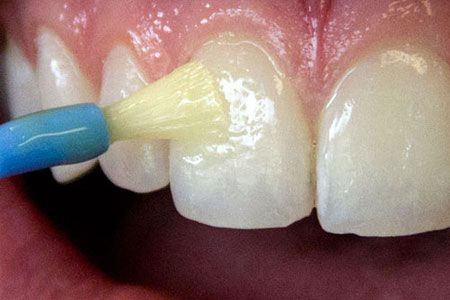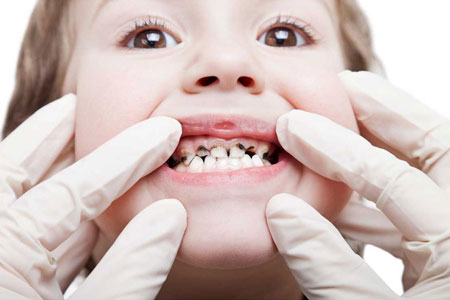Fluoridation refers to the process of applying fluoride directly to the teeth in the form of gel or varnish, under the dentist’s supervision. This procedure must be repeated every 6 months, as the use of toothpaste only is not enough.



Small children have either baby teeth, covered in a thin layer of enamel, or permanent teeth that have just emerged. That makes them extremely prone to decay. Through a series of fluoride treatments, their teeth can therefore become more resistant to decay for life. Children should normally have fluoride varnish applied to their teeth at the age of 3, after all their baby teeth have emerged. The fluoride used in dental offices, as well as in fluorinated toothpaste, is entirely harmless. We should, however, follow our dentist’s orders when it comes to the amount and the type of fluoride we will be using.

Fluoridation in children usually takes place after tooth cleaning and should be repeated every 6 months. This happens because children are more at risk for tooth decay. Hence, by going to the dentist every 6 months, they have the opportunity to arrest any dental diseases. Applying fluoride in the dental office, in combination with regular dental check-ups, can help prevent long-term adverse effects. In some cases, according to a child’s risk of caries, fluoride application could be recommended more often, for example three or four times a year.
Adults, apart from children, can also benefit from fluoride – especially those with a high risk of tooth decay or with extremely sensitive teeth. Most of the adults resort to fluoride treatments because their gums receded or pulled away from the teeth, leaving their roots exposed. Topical fluoridation helps protect the roots, treat sensitive teeth and delay tooth decay.
The teams with a high risk of tooth caries include people with:
-
Poor dental hygiene.
-
Orthodontic appliances (adult orthodontics is becoming increasingly popular nowadays).
-
A dry mouth or without saliva (due to medication, radiation or other diseases).
-
A diet high in sugar or carbs, especially in between main meals.
-
Exposed roots, usually due to periodontal disease.
-
Poor or non-existent dental care.
-
Physical or mental disability.
-
A profession that favours tooth decay (wine tasters, professional swimmers or people working in colour industries).







